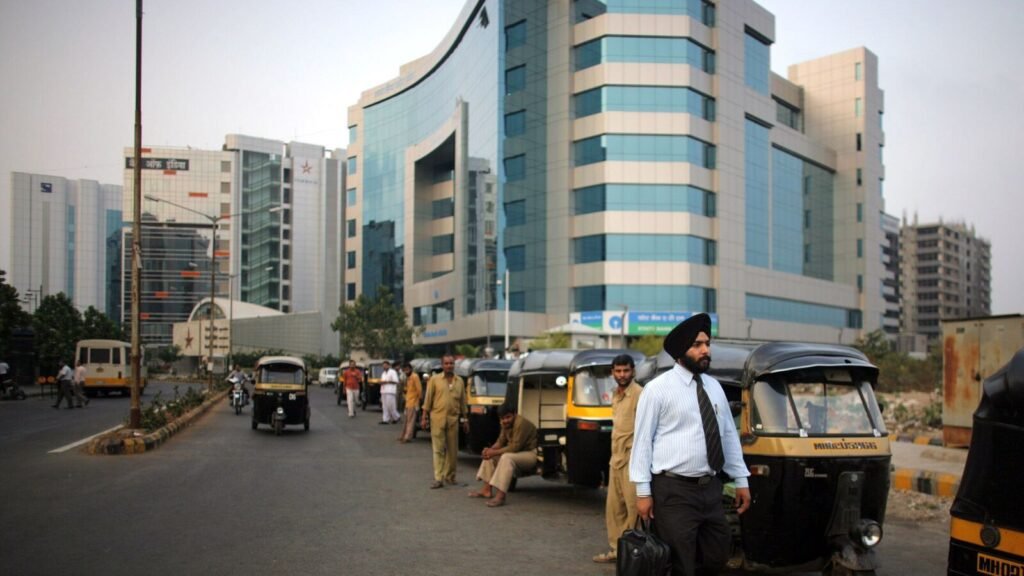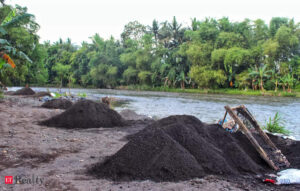Bandra Kurla Complex is packed to the gills; where do Mumbai’s top corporates go next?

New Delhi: More than two decades since the rise of Bandra Kurla Complex (BKC), Mumbai’s costliest business district is gasping for space as offices fill out, and fresh space becomes available only in the next couple of years.
According to real estate consultants Knight Frank India and Anarock Property Consultants, office vacancies in BKC are down to a record low of 3-4% from 13-14% four years ago, raising rents and sparking a scramble for nearby areas such as Kalina, Kurla, Worli and Lower Parel.
Many construction projects are still years away from securing occupation certificates (OCs) that are necessary before tenants move in, said Vivek Rathi, national director, research, at Knight Frank. “Therefore, these vacancy levels continue to drop,” Rathi said.
Mumbai’s town planners began developing 370 hectares of marshland in central Mumbai in 1977 as a replacement for Nariman Point, the country’s prime business district at the time. The floodgates to BKC opened with the arrival of banks and the financial sector in the 2000s, with the National Stock Exchange (NSE) opening in 2001. ICICI Bank, Trident Hotel and Bharat Diamond Bourse joined nearly a decade later. It now hosts Facebook’s India office, an International Financial Service Centre, and several international investors such as Blackstone, Brookfield and Sumitomo. The headquarters of the Securities and Exchange Board of India is also located in BKC.
Rising demand
Demand for office space at BKC, a short drive from the city’s airport, has risen through the years. Currently, Japan’s Sumitomo Corp. is building an office complex in a three-acre BKC plot that it purchased in 2019, but it is likely to be completed only by 2026-27. Meanwhile, Bengaluru-based Prestige Group is developing 2.79 mn. sq. ft of office space in BKC.
However, even these won’t be sufficient to satisfy demand.
“In 2022 and 2023, we saw annual gross leasing volumes of 1.4 to 1.6 mn sq. ft, which includes fresh leases, renewals and pre-commitments,” said Gautam Saraf, managing director, Mumbai and new business at Cushman & Wakefield, another property consultant. “Against that, new supply has been quite limited. In the last four years, merely 1.5 mn sq. ft of office space got delivered in BKC. Thus, there has been a shortage of supply in this micro-market while the demand remains robust.”
Not surprisingly, rents have gone through the roof.
Since the March quarter of this year, rentals in Grade A office spaces are up 10-12%, Saraf said. On average, rent has jumped from ₹300 per sq. ft to ₹400 per sq. ft in three years, said Anuj Puri, chairman of Anarock. BKC’s costliest location is at Maker Maxity, commanding nearly ₹550 per sq. ft.
“As BKC continues to be the tenant-preferred destination for front office operations, particularly, rental rates are anticipated to appreciate by approximately 3-5% by the end of 2026,” said Anshuman Magazine, chairman & CEO, India, SEA, MEA at CBRE, a real estate consultancy.
Corporate churn
Space shortage and steep rent have pushed some to exit BKC and venture out.
“Many companies, whose lease tenure has come to an end, are moving to the periphery of BKC, in areas like Kalina and Kurla,” said Puri. “It doesn’t make sense for them to stay here because it has become very expensive.” “Then, newer companies come to BKC who are able to afford this kind of rents. There’s a churn happening,” he said.
“Worli and Lower Parel are indeed emerging as the next major corporate districts in Mumbai,” said Domnic Romell, president, Credai-MCHI, the apex body of builders in the Mumbai Metropolitan Region (MMR). “With well-established infrastructure, excellent connectivity to key areas like Nariman Point, BKC, and the suburbs, as well as their proximity to major business hubs, both areas are becoming increasingly attractive to corporates.”
“The locations which have surplus infra will be preferred over the ones which have deficit infra,” Rathi from Knight Frank said. “That is where, you know, markets like, in the South Mumbai get a good lineup.”
South Mumbai
Average rentals in South Mumbai are less than in BKC, at nearly ₹230 per sq. feet per month, said Vimal Nadar, head of research, at Colliers India.
“Key transit-oriented infrastructure projects including the Mumbai Trans Harbour Link (MTHL), Coastal Road Project (CRP) and the recently opened connector bridge have led to significant reduction in travel time and enhanced the connectivity of South Mumbai and prominent sub-urban localities in the MMR,” Nadar said. “Once the entire stretch of Line 3 of Mumbai metro connecting Aarey and Cuff Parade becomes operational, South Mumbai would see enhanced connectivity with areas like Central Mumbai, Bandra and SEEPZ, and potentially rediscover its affinity among leading occupiers.”
Many are turning their attention to South Mumbai for its strategic location and infrastructure.
“With the rising number of corporate offices and commercial establishments, these locations offer great potential for companies seeking prime office space, combining convenience with the prestige of being located in South Mumbai,” Credai’s Romell said.
There is also growing interest in northern areas like Goregaon and Oshiwara as well as Nariman point at Mumbai’s southern tip.
Nariman Point revival still far
Around four to six mn sq. ft are expected to be available around Nariman Point, but that will take at least four years, Rathi said. Though there is limited scope for greenfield development, redevelopment projects can enhance supply, he added.
Nariman Point, India’s original central business district, includes old buildings that require upgradation and have potential for redevelopment and retrofitting, Colliers’ Nadar said. “In fact, more than 95% of grade A office buildings in the area hold potential for redevelopment.”
There is a caveat, though — Redevelopment near Nariman point will be tricky as most buildings there have fractional or strata ownership.
“To get everybody together to redevelop is a challenge,” C&W’s Saraf said. “Redevelopment in strata owner assets is always difficult as you have to make everybody agree to do the redevelopment.”
Many buildings here are under the Pagdi system, where tenancy rights can be purchased and transferred but only with the consent of the landlord. This makes redevelopments costlier, Saraf said.
Another business district?
While there is heightened demand for office spaces, especially from banking and financial services, pharmaceutical majors, social media firms, and co-working entities, there is still limited scope for another area to replace BKC’s connectivity and premium location.
Knight Frank’s Rathi pointed out that it takes decades for corporate districts to come up.
“For an Abu Dhabi or a Whitefield to emerge in Mumbai, it would take a lot of time,” Rathi said. “In the next 10 years, I would say not more than one central business district (CBD) will get added to this market”.








